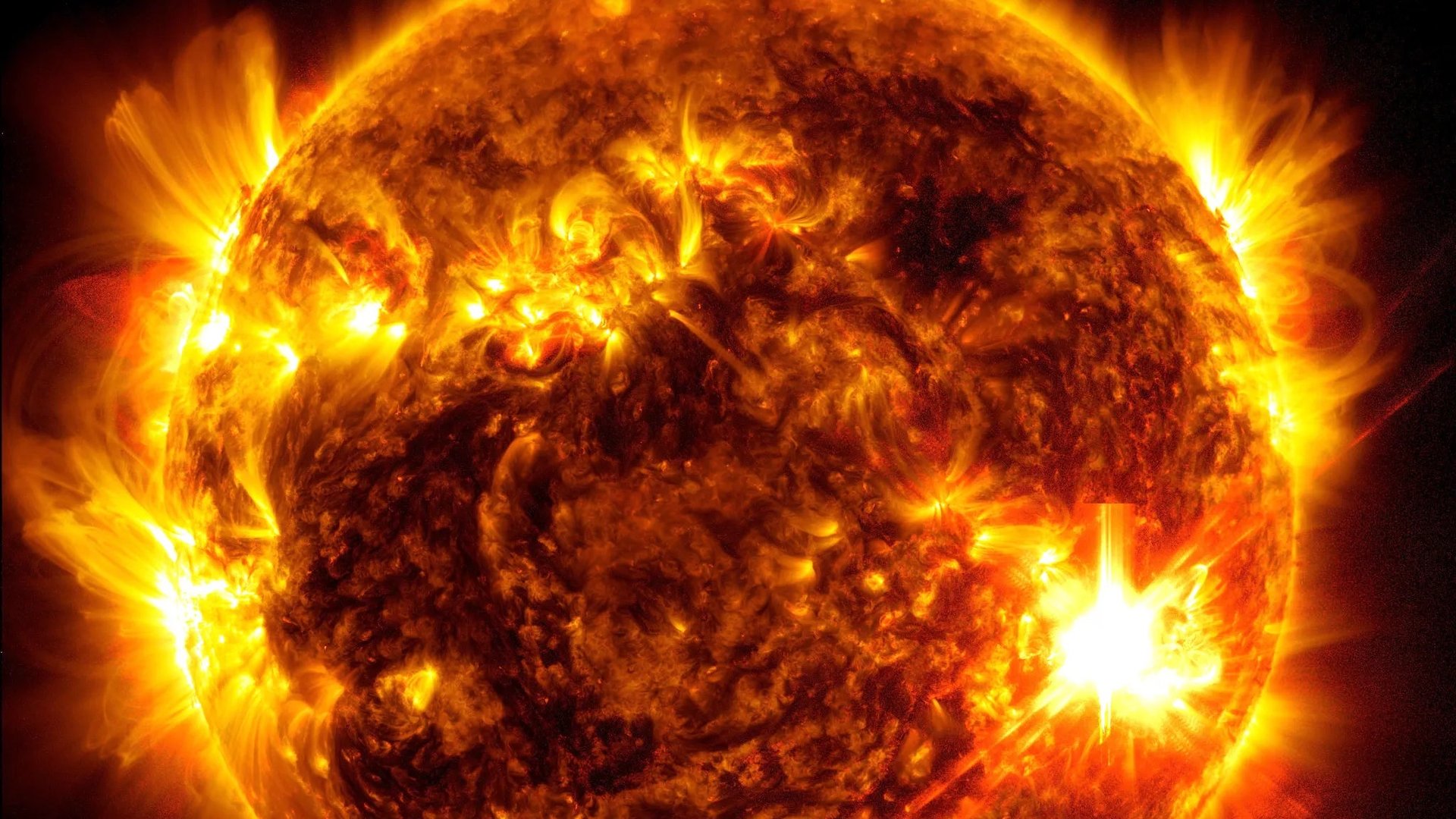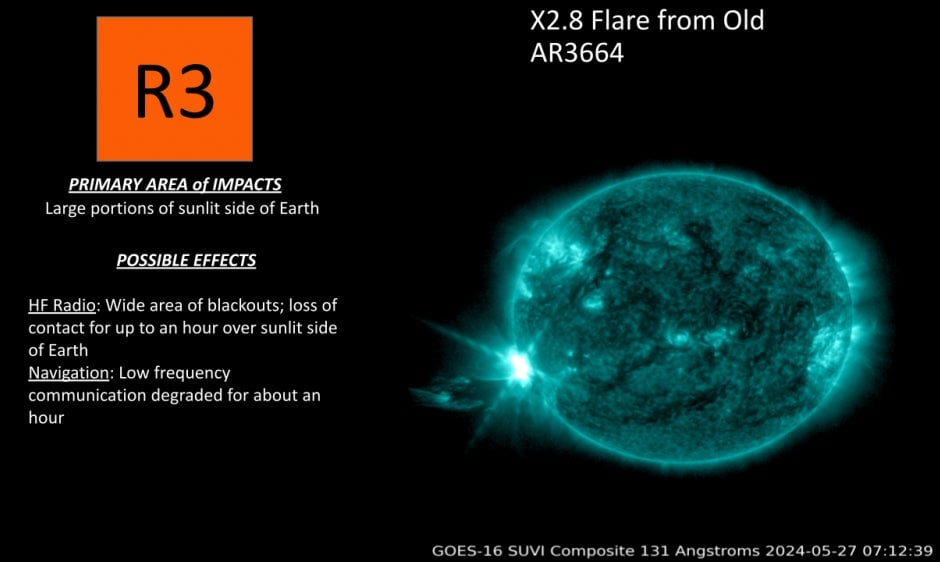Get ready for another solar storm
Earth may experience another solar storm — and more auroras—in early June as the hyperactive sunspot cluster rotates back into view

It’s back! After unleashing the strongest geomagnetic storm in more than 20 years, the notorious sunspot cluster AR3664 is once again visible and still spewing copious amounts of radiation into space.
Suggested Reading
The National Oceanic and Atmospheric Administration’s (NOAA) Space Weather Prediction Center recorded a solar flare erupting from the southeast limb of the Sun on Monday. Sunspot AR3664 is likely responsible for the flare, which was classified as a strong X2.8.
Related Content
Solar flares are categorized by their strength, starting at B-class, which are the weakest, all the way up to the strongest, the X-class. The solar flare responsible for the geomagnetic storm that took place between May 10 to 12 was classified as X1.1. NOAA warned that the charged particles released from the Sun this week could reach Earth, although it may take a while to get here due to the location from which it erupted.

The last time AR3664 was visible, it had grown to nearly 124,300 miles (200,000 kilometers) and was becoming one of the most active regions on the Sun during this current solar cycle. As the Sun rotates on its axis, the sunspot became hidden from our view for around two weeks but now it’s back.
The cluster is now gradually turning to face Earth again, appearing from the southeastern region of the Sun (the eastern limb refers to the side of the Sun that’s rotating into view, from the perspective of the solar disk). It appears as though AR3664, now known as Old AR3664 to stellar scientists, has not slowed down since unleashing a solar storm on Earth. While it was still hidden from our view on Earth, NASA’s Solar Orbiter spacecraft observed an X12-class solar flare erupting from the violent sunspot. The flare resulted in a huge coronal mass ejection on the side of the Sun facing away from us, Ryan French, a solar physicist at the National Solar Observatory, wrote on X.
If the sunspot continues to release charged particles from the Sun’s surface, it may result in another solar storm. The storm that occurred earlier this month reached a rating of a G5, the highest level on the geomagnetic storm scale. The radiation spewed by the Sun led to disruptions in the power grid and radio blackouts, among other technologies and infrastructure. It also resulted in beautifully colorful auroras across the night skies around much of the world.
We may be treated to more auroras in the coming weeks, but hopefully the Sun won’t mess with our precious technology too much.
